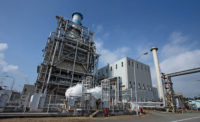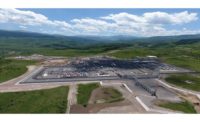A magnitude 6.7 earthquake occurred on the northern Japanese island of Hokkaido on Sept. 6, leaving at least seven dead and damaging buildings and structures in the region, including a 1,650MW coal-fired thermal power plant that was taken offline.
The quake struck east of the city of Tomakomai, and was only 70 km from the city of Sapporo, Hokkaido's largest city with a population of 1.9 million. The earthquake was 40 km deep according to Japan’s Meteorological Agency, which warned that aftershocks were expected to follow. The death toll stands at seven as of Sept. 7, with 300 injured and 33 still missing according to official government estimates. Numerous landslides were reported in the mountainous region in the hours after the quake, and there are reports of widespread damage to roads and transportation networks.
The severity of the quake lead the island’s power utility, Hokkaido Electric Power Company, to take its largest plant offline. The Tomato-Atsuna coal-fired plant in Tomakomai was taken offline shortly after the quake began at roughly 3 AM local time on Sept. 7. The loss of the plant on the grid led to widespread blackouts in the Hokkaido region, leaving almost three million households in the dark. Power was partially restored the following morning after the utility brought hydropower plants online to compensate for the loss, according to reports from the Japanese broadcast network NHK. The utility reported that steam leaks were found in pipes at two of the three generating units at the Tomato-Atsuna plant, and a fire was reported at the third unit. Repairs are expected to take at least a week before the plant can be brought back online.
The Tomato-Atsuna power plant consists of three coal-fired units rated at 350MW, 600MW and 700MW. The oldest functioning unit, rated at 350MW, came online in 1980, and the 700MW unit was commissioned in 2002.
Three reactors at the Tomari nuclear power plant in Hokkaido were offline for safety checks at the time, and are running on backup generators following the quake, which have enough power to last at least a week, according to NHK reports on statements from the Japan Nuclear Regulation Authority.
By Jeff Rubenstone in Nagasaki, Japan




Post a comment to this article
Report Abusive Comment